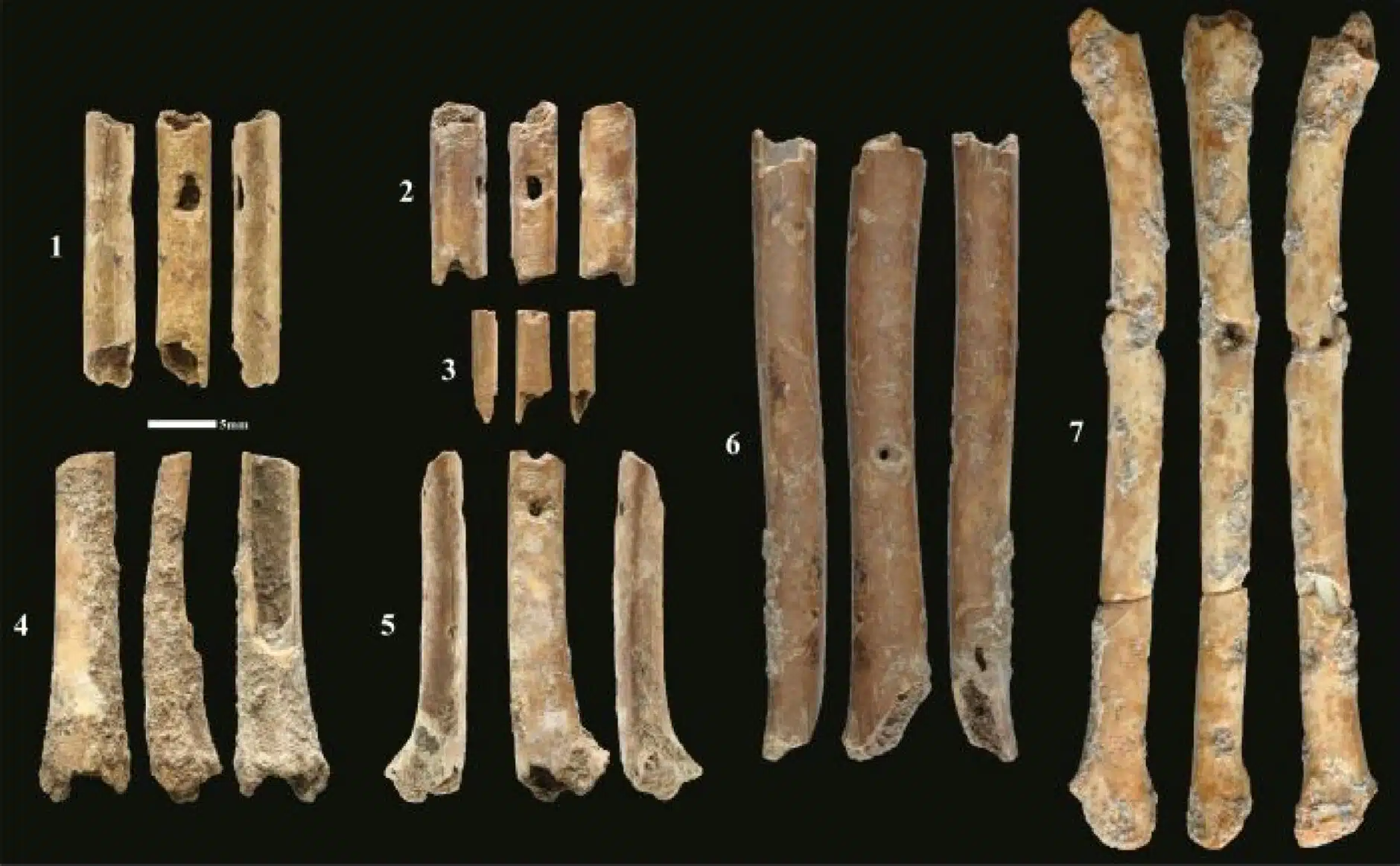An artifact found in northern Israel decades ago has undergone recent lab research to unveil new information about early human development in the Far East (region of modern day Eastern Europe and Middle East). A village in the Hula Valley was found with a collection of over one thousand bird bones, seven of which contained markings and holes in them. Using modern dating and analyzing techniques, these bones were confirmed to be sound instruments from Natufian Culture. The Natufians were a prehistoric human society that lived in the Levant which is an area that spans over modern Israel, Syria, Jordan, and Iraq. These people are estimated to have lived here between 13000 BCE and 9000 BCE, during a period in human history when the transitioning from a nomadic lifestyle to cultivating crops began.

These sound instruments are thought to be the first found in the Far East, giving us more understanding of what life was like for the Natufians during such an important episode of human history. In class this week we discussed dating and analyzing techniques that archeologists use to gain more knowledge from artifacts and sites. Previous information about the Natufians includes that they are a society from the Stone Age culture, which can be found through their creation and use of stone tools. Seriation was used here to be able to place the time that this society took place. By understanding that they used stone tools, they are able to know that the Natufians were older than any society in the Bronze or Iron ages. Using micro-CT scans of the bird bones, the perforations could be linked to be Natufian as the holes in the bone could be confirmed as being made with stone tools. The holes were also spaced on intervals, backing the idea that the instrument was made purposefully. Further evidence that the bird bones were an instrument can be found by looking at the artifact through a microscope, as signs of wear from holding the instrument could be seen.

These new technologies and data methods are able to provide us with an extensive amount of information about ancient societies. By creating a modern replica of the bone instrument, the sounds that would have been produced from it can be heard. The result is a sharp, high-pitched tone, which leads scientists to hypothesize that while it could still be used for musical purposes, it may have been used to communicate with one another, as a tool while hunting, or as a way to communicate with birds.
Regardless of what the actual purpose of the instrument was, new analysis techniques show us that we can continue to broaden our understanding of ancient societies during a time in history of such importance.
Extra Links
New York Times article about the instruments: https://www.nytimes.com/2023/08/28/science/archaeology-birds-flute.html
Information about Natufian Culture:

How was seriation applied to examining these artifacts, and why do you think this approach was considered fitting for studying these instruments?
Seriation is when artifacts are compared to others in a relative chronology in order to facilitate with the dating of the artifact. In this situation I think seriation could have been used by comparing the tool of a bird bone flute (needing the use of other tools and craftsmanship to make the flute effective) with other tools such as the carvings in wood or stone. I believe it was fitting to use when studying the flutes as it can help understand that this may have been made previous to the uses of more “advanced” tools made from Bronze and Iron. As so many communities have lived in this area throughout time, seriation helps order the creation of these tools compared to others.